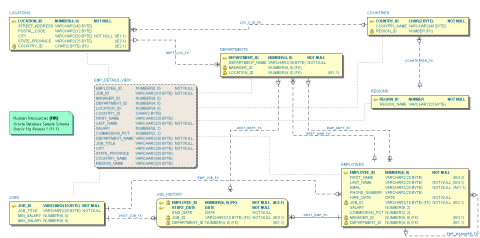Tutorial
- Getting Started
- ERD Notations
- User Interface
- Program Preferences
- Install a Purchased License
- Uninstalling
ERD Notations
A typical Entity Relationship Diagram (ERD) consists of two parts:
- Entities - represented by boxes
- Relationships - represented by lines
Entities that do not depend on any other entity in the model for identification are called independent entities. In IDEF1X and IE notations independent entities are represented as square-cornered boxes:

Dependent entities are further classified as existence dependent, which means the dependent entity cannot exist unless its parent does, and identification dependent, which means that the dependent entity cannot be identified without using the key of the parent. Dependent entities are represented as rounded-cornered boxes:

The primary key of the entity is always painted first with bold text and has ![]() icon:
icon:
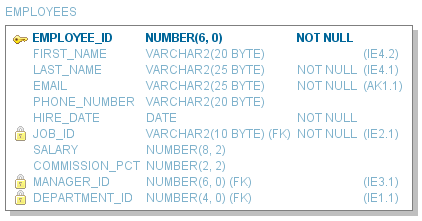
Alternate key (unique key) is designated by the symbol (AKn.m), where n is a number that is placed after the attributes that form the alternate key group, m identifies the column's order inside the alternate key group:
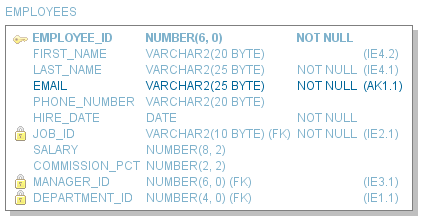
Unlike a primary key or an alternate key, an inversion entry is an attribute or set of attributes that are commonly used to access an entity, but which may not result in finding exactly one instance of an entity.
Inversion Entry (IE) is designated by the symbol (IEn.m), where n is a number that is placed after the attributes that form the inversion entry group, m identifies the column's order inside the inversion entry group:
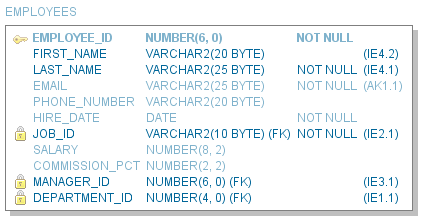
Foreign key is designated by the symbol (FK) and has ![]() icon:
icon:
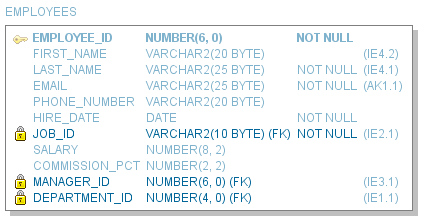
An identifying relationship means that the child table cannot be uniquely identified without the parent. A non-identifying relationship is one where the child can be identified independently of the parent. Cardinality is the relational property that defines exactly how many instances appear in a child table for each corresponding instance in the parent table. IDEF1X and IE notations differ in the symbols that are used to specify cardinality:
| Cardinality Description | IDEF1X Notation | IE Notation | ||
|---|---|---|---|---|
| Identifying | Non-identifying | Identifying | Non-identifying | |
| One to zero, one or more |  |
 |
 |
 |
| One to zero or one |  |
 |
 |
 |
| Zero or one to zero, one or more (non-identifying only) |  |
 |
||
| Zero or one to zero or one (non-identifying only) |  |
 |
||
Oracle Human Resources (HR) Sample Schema in Integration Definition for Information Modeling (IDEF1X) notation:
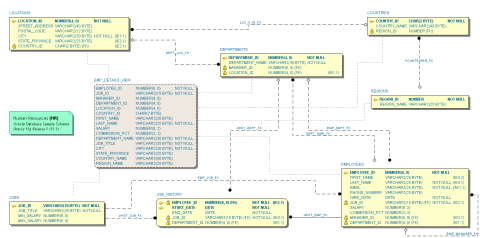
Oracle Human Resources (HR) Sample Schema in Information Engineering (IE) notation:
